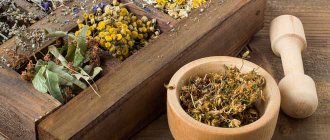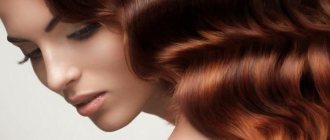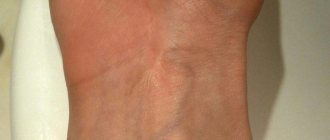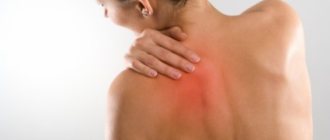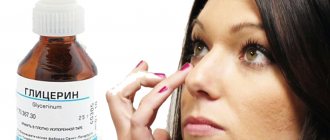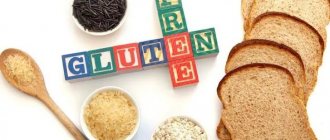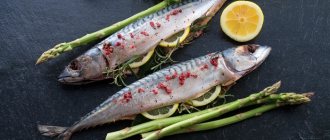The harm of lipstick
It would not be worth talking about cheap lipsticks at all, but let us remind you that in this case the matter is not limited to cosmetic problems: cheap lipstick can be poisonous and often contains heavy metal salts and aggressive chemical dyes.
Sparkling and luminous, such lipsticks may contain substances that, in sunlight, release so-called atomic oxygen - a powerful oxidizing agent that dramatically accelerates skin aging.
Therefore, before using lipstick, you should at least inquire about its composition in general terms, otherwise, instead of pleasure, you can get burning, itching and even inflammation of the skin.
For example, carmine dye, also used in the food industry, quite often causes severe allergic reactions, and lanolin, which has always been used to moisturize the skin, disrupts the functioning of the stomach and intestines.
Vaseline has long been used to soften skin.
, and is considered a safe product, but it can also cause allergies, and with regular use it dries out the skin of the lips. As a result, feeling dry, a woman unconsciously begins to tint her lips more and more often, and the circle closes. Perhaps many manufacturers know about this, but are in no hurry to inform consumers so that the demand for lipstick does not fall - otherwise, where should they put their product?
The ingredients listed above can also cause headaches and nausea if they enter the gastrointestinal tract regularly, albeit in minimal quantities.
Mineral oils—microcrystalline wax and paraffin—are also dangerous.
. These substances are based on petroleum products and can accumulate in the body, affecting the kidneys, liver and lymph nodes - and there are many women who literally do not go outside without applying their favorite lipstick.
Many well-known manufacturers add paraffin paraffins to lipsticks.
so that it is thick and does not spread. Paraffin particles are not visible to the naked eye, but they fall from lipstick onto the teeth and stick tightly to them, becoming a shelter for millions of bacteria. As a result, more microcracks appear on the teeth and caries develops faster - and today there are enough reasons for it.
Makeup artist answers questions
What do cosmetologists think about men and women eating lipstick? Can a lip cosmetic product cause health problems?
Is lipstick harmful to the body?
The answer to this question directly depends on the composition of the lipstick. Scientists have concluded that modern products contain a lot of metals, which negatively affects women's health. To complicate the issue, leading cosmetics companies are not required to list metals in lip products because health controls do not regulate this aspect. The buyer is thus limited in his ability to track the amount and concentration of metals in the composition with a beautiful tube.
For those who do not want to risk their health, it is better to choose non-toxic lipsticks. They are produced by the companies BodyShop, Clinique, ChristianDior, MAC.
When did the first lipstick appear?
Many people consider lipstick to be the invention of modern makeup artists. However, this is not entirely true - humanity began painting lips many millennia ago. Here's what ancient world researchers say about this product:
- One of the first fans of lipsticks was Shubad, the queen of the ancient Sumerians. Many contemporaries followed her example, painting their lips with a mixture of ground red rocks and lead white. Of course, such a product was very toxic, however, this did not bother the ancient fashionistas.
- Mesopotamian women knew lipstick more than 5,000 years ago. Crushed semi-precious stones were used in its manufacture.
- In the first millennium AD, prostitutes of Ancient Greece used lipstick. Brightly painted lips have become a kind of calling card of their profession. Gradually, lipstick became popular among rich Greek women. At the same time, the component composition of the products was very different and could consist of ocher, flowers, seaweed, resins and even crocodile excrement.
- Ancient Egyptian women could hardly live a day without cosmetics. Lipstick in Egypt was made from turquoise, carmine or ocher. The colors of the products were very different: from scarlet and bright orange to black.
- The wives of wealthy ancient Romans kept trained slaves who made cosmetic products. Interestingly, Roman men also used lipstick. Its color could be different depending on the position occupied by the Roman.
What is usually included in lipstick?
The basic components of lipstick are:
- wax;
- fats;
- oils
However, many brands include various chemicals in their lip product to improve the longevity, color, and taste of the product. Thus, some samples may contain nickel, aluminum, cadmium, lead, copper, chromium, etc. In addition, many lipsticks include various cosmetic fragrances with a chemical composition.
See what and how lipstick is made from at the Oriflame factory:
How to choose lipstick
No one is calling for you to stop using decorative cosmetics, but it won’t hurt to brush your teeth more often, especially if you regularly use lipstick. You should try to choose a high-quality lipstick that contains more natural ingredients, including natural wax.
There are components that are included in almost all lipsticks
: these are waxes, hard and semi-solid; fats, oils and fat-like products, often derived from petroleum; solvents and hardeners.
High-quality lipstick contains natural beeswax, candelilla and carnauba waxes - their properties are similar.
Beeswax is about 5%, and it binds the other components well, allowing you to make the fondant stick hard and neat. Candelilla wax is added for shine - it is extracted in America from certain types of cacti, and it can be up to 13%; Carnauba wax is extracted in Brazil, from the palm tree, which is called the tree of life there - it retains moisture well in the skin. Recently, instead of natural waxes, synthetic products have often been used, which is why you should study the composition of the lipstick when purchasing.
Why do you need lipstick?
Beautiful, well-groomed lips are one of the most attractive and important details of a woman’s image. Perhaps even the brightest epithets are not able to fully convey the captivating beauty of seductive female lips. Their charm and sensuality are beyond any enthusiastic descriptions, and their enchanting tenderness is stronger than a thousand exquisite words. On the pages of the Kama Sutra we find a mention of the lips of the most impeccable woman - the Padmini lotus. The enthusiastic authors of the Indian treatise compare them with a sweet fruit and a magnificent coral. These are the lips that can charm, seduce and drive the most demanding man crazy.
Alas, not all women were endowed by nature with ideal lotus lips. Many of those who can only dream of such a gift have resigned themselves to dry and lifeless lips. Others persistently fight for natural beauty and diligently disguise unaesthetic cracks. Most often, attempts to revive dry, caked lips turn out to be equally useless. The reason for this is ignorance of basic hygiene secrets and simple rules for caring for the skin of the lips. It turns out that in order to protect your lips from the three main “enemies” - cracks, burning and chapping, it is enough to use only one irreplaceable multifunctional product - hygienic lipstick with a UV-15 filter. Natural beeswax, which is part of the hygienic lipstick, is incredibly miraculous: it prevents dehydration, increases skin elasticity and creates an excellent protective coating on its surface.
As a rule, hygienic lipsticks contain moisturizing and fatty components, vitamins and, of course, filters that protect against the harmful effects of ultraviolet rays. In addition to the main ingredients, specialists from cosmetic brands supplement the composition with extracts of medicinal plants that have various properties and indications. Some components need to be described in detail.
Jojoba oil is known for its remarkable nutritional properties. It penetrates the skin very quickly and makes it flawlessly silky. Moreover, jojoba oil has proven itself to be an effective antioxidant. Apricot and castor oils have similar nutritional properties and softening effects. A good antioxidant is squalene. Penetrating the skin, it saturates it with many active components, including vitamins A and E.
Aloe Vera gel, also a traditional ingredient in chapsticks, is well known for its anti-inflammatory and healing properties. It not only destroys bacteria and moisturizes the skin, but also promotes cell regeneration. Another source of vitamins (C, B12) and supplier of microelements is Icelandic Cetraria. Like Aloe Vera, Cetraria Icelandica fights germs and relieves inflammation. Quite often, women find themselves in a situation where the condition and freshness of their lips are of paramount importance, and they only have a few minutes to get them in order. In such cases, a regular toothbrush with soft bristles will come to the rescue. To get rid of peeling, you need to moisten the brush in boiled water and massage your lips a little. After such a simple procedure, you need to lubricate them with hygienic lipstick. However, you need to use hygienic lipstick not only in emergency cases. Remember that your lips are a very delicate and capricious detail that needs help and protection regardless of the time of year.
Types of lipsticks
Lipstick can be hygienic, photoprotective and colored - translucent and opaque.
Hygienic lipsticks are considered safe
- healing and protective; they do not contain dyes, but have useful additives; they can be recommended even for children, but the composition should still be studied.
Photoprotective lipstick, as its name suggests, protects lips from the sun and wind.
, while softening their thin and delicate skin. By the way, photoprotective components are also added to many hygienic lipsticks.
Tinted lipsticks are the most popular
: These are the ones that can be found in the cosmetic bag of women of different ages, at any time and in any country in the world.
What reviews can you trust?
It's no secret that reviews of brands are often made-to-measure. This applies to both negative and positive ratings, it’s just that in the first case it’s competitors, and in the second case it’s people hired by the manufacturing company. This means that these reviews are most likely unreliable. So it's better to look for posts about lipstick in general. They can be found on women's websites, forums dedicated to makeup and cosmetics, etc. If a person simply writes reviews about super-long-lasting lipstick as such and warns that it is better not to use this type of cosmetics, it is worth studying this opinion. Why this lipstick is not suitable:
- leaves marks on everything, despite the stated characteristics;
- dries lips;
- causes allergies, etc.
Positive reviews about the lipstick are also worth taking note of. Perhaps you will discover something new.
High quality lipsticks
The quality of lipstick depends not only on the recipe, but also on the production technology - as a rule, well-known manufacturers provide this technology.
Good lipstick
high quality gives an even stroke; It is applied to the skin easily and evenly, and stays on it, causing a feeling of tenderness and silkiness. The smell and taste of this lipstick are pleasant, and the surface is smooth; it doesn’t tighten or irritate your lips – you almost don’t feel it at all; The surface of the lipstick is smooth and evenly colored. High-quality lipstick does not melt in the sun and generally reacts little to temperature changes; The lipstick core is quite durable; When stored, it does not become covered with a gray coating or droplets, and does not lose its taste and aroma.
Avoiding hassles when buying lipstick is not that difficult. There is no need to buy it in kiosks and underground passages, and especially from random people.
The packaging of the lipstick and the product itself must be examined carefully: if the packaging looks cheap, the plastic is easily scratched, the lipstick itself is uneven in color, covered with “beaded” droplets, and the smell is too strong - its quality is low.
What are the types of lipsticks?
Lipsticks are also divided into nourishing, moisturizing, long-lasting and ultra-long-lasting - you can easily wear the latter all day long.
Nourishing lipstick is relevant in winter, and in general in cold, windy times
- it contains more fatty components. Before applying it, it is advisable to use a contour pencil so that the lips do not “blur”.
Moisturizing lipstick makes lips softer and contains many natural substances
: vegetable oils - avocado, castor, cocoa, sunflower, coconut, extracts of chamomile and other herbs. This type of lipstick does not stay on the lips for long, and also “makes up” - it can leave stains on clothes, which are then difficult to wash off. It is usually used in the warm season.
The choice of lipstick texture depends on personal taste, as well as on the shape of the lips, style of clothing and makeup, appearance and other factors.
Pearlescent lipsticks have become popular again today, as have lacquer lipsticks with a slight shine. You can apply gloss on top of red or pink lipstick - your lips will become plump and expressive.
If you do not want to focus on your lips, then choose a matte lipstick of a soft color - your lips will appear less voluminous.
Composition of a typical lipstick. Lead content in lipstick.
About 60% of the composition of a regular mass-market lipstick is wax and oils. Next come various dyes and pigments that are responsible for the color of the lipstick. In addition, a typical lipstick may contain various flavors (for example, chocolate or caramel flavor), preservatives, as well as lead, which is added to the lipstick to stabilize the color.
- Wax allows the lipstick to maintain its shape while being easy to apply to the lips. Thanks to wax, lipstick perfectly withstands temperatures above 60 °C. Today, three types of wax are used in the production of lipstick: beeswax, as well as vegetable candelilla and carnauba wax.
- Oils in lipstick can be either natural or artificial. The most useful are natural oils, such as olive, sunflower, castor. However, sometimes, to reduce production costs, cosmetics manufacturers use mineral oil - its name sounds quite harmless and natural, but few people know that mineral oil is extracted from petroleum products. Of all types of oils, it is the cheapest, and therefore is often used in a wide variety of cosmetics.
There may be little harm, but there is little benefit from it: unlike natural oils, mineral oil does not moisturize the skin, but creates a protective layer on its surface that retains moisture and, as a result, can cause the skin to stop producing moisture as needed quantity (it will become too dry).
- Fragrances are used in almost any lipstick, but they are present in small quantities. The task of fragrances is to give a cosmetic product a pleasant smell, as well as to drown out the aromas of other ingredients, which may not always be pleasant for customers. Some artificial flavors can be strong allergens!
Preservatives are ingredients that help extend the shelf life of lipstick. Today, not a single cosmetic product can do without preservatives, since without them the lifespan of lipstick can be only a few weeks. Doctors have many questions about the safety of some common paraben preservatives
- Lead is perhaps the most potentially harmful component in lipstick. Lead improves color fastness. Lead is not added to lipstick as a separate component, however, most color enhancers used today are made on bases that contain lead.
Choosing lipstick color
Makeup artists give more detailed recommendations on choosing the color of lipstick - after all, on the lips it almost always looks different than in a pencil. The skin on your fingertips is similar in color to the skin on your lips, so it is recommended to apply the lipstick from the sample to them.
If your lips are large, choose calm colors: brown, purple, bronze shades; thin lips are enhanced by light lipstick.
Blondes with light, almost white hair are suitable for cappuccino, mauve, or red berry-colored lipsticks - raspberries, strawberries, cherries, etc.
Goldilocks should choose coral and peach tones; redheads – shades of terracotta and cinnamon.
For brunettes, depending on the color of their eyes and skin, rich pink, ruby, raspberry red, plum, red-brown, dark cherry and light pink are suitable - lighting and time of day also matter here.
Any lipstick can be stored for no more than 3 years - do not use it after the expiration date. And don't forget to remove it from your lips every night - don't sit down to dinner with lipstick on your lips.
Every woman, man and even child needs to take care of their lips. Nature has deprived them of secretion glands and melanin, which protects from the sun. Having rather thin skin, they are quite vulnerable to the influence of external factors, so they quickly lose their natural protection and beauty. In order to prevent aging, peeling and some diseases, you need to take care of your lips on time.
Hygienic lipstick can restore them to their former beauty and health. It is only important to choose it correctly and use it regularly.
History of hygienic lipstick
Lipstick translated from Italian (where it sounds like “burrocacao”) means “cocoa butter.” For the first time, people started talking about such a cosmetic product (based on sheep fat and almond oil) in Ancient Egypt. Using henna, the lips were given a bright shade.
Surprisingly, for some time using lipstick was considered the prerogative of only men. And the French managed to create the prototype of modern hygienic lipstick only in the 19th century.
Industrial production of this cosmetic product began in the USA at the end of the 19th century. Dr. Charles Brownie creates and releases the first chapstick
, giving her the name ChapStick. This creation resembled a candle wrapped in foil. Unfortunately, this lipstick creation experiment was not successful. And only the doctor’s followers succeeded by the mid-20th century. to improve this cosmetic product and produce it in the form of a solid cylinder.
What are the benefits of chapstick?
Hygienic lipstick is not only an item of decorative cosmetics, but also the main assistant in protecting and caring for your lips. After all, the influence of the sun, wind, and frost sometimes has very negative consequences for them.
Hygienic lipstick helps:
- healing of the skin;
- protection against viral infections;
- cell regeneration;
- relief from discomfort and unpleasant sensations.
Hygienic lipstick, consisting of wax and nutritional, vitamin, moisturizing, sun-filtering additives, relieves the suffering of chapped, chapped, irritated lips.
How to choose hygienic lipstick?
Consider the time of year
In summer, lips dry out and are susceptible to exposure to sunlight, so lipstick with sun protection is the best choice at this time.
In the fall, prepare for the upcoming cold weather. Therefore, try to nourish your lips in time before the first frost and replenish the optimal water and fat balance.
In winter, choose products with an oil-like consistency with the addition of shea butter, avocado, cocoa butter, lanolin, and retinol, which will soften your lips and make your skin elastic and smooth. Products with sunscreen properties remain useful in winter. Remember, moisturizing hygienic lipsticks at this time can be harmful because they disrupt the integrity of the lipid film that protects the skin from the cold.
In spring, the body may suffer from a lack of vitamins and lose its protective functions. Lips become vulnerable to various infections. The main requirement for spring lipstick is vitamin and healing components (vitamins A, E, C, calendula, chamomile, sea buckthorn).
Pay attention to the composition
Ingredients to avoid:
- Silicone oil. This ingredient allows the product to extend the shelf life and durability of the coloring pigment. In turn, the oil, covering the skin of the lips with a kind of dense layer, does not allow them to be nourished with useful additives.
- Salicylic acid. Promotes peeling of the skin of the lips.
- Camphor, phenol, menthol. While giving your lips a feeling of freshness, smoothness, and charming plumpness, such ingredients can contribute to dry skin.
- Perfume additives usually have an alcohol component that dehydrates and degreases your lips.
Vaseline and mineral oil in lipstick bases lead to clogged pores, so give preference to products based on natural wax. For example, beeswax will prevent skin dehydration, create a protective barrier, and give firmness and elasticity to your lips.
Use hygienic lipstick regularly - and your lips will shine with health and beauty.
The benefits of lipstick
Lipstick manufacturers are now adding protective, moisturizing, nourishing, and healing components to their production that protect lips from the sun, wind, frost, dry air and poor ecology. Lipsticks that moisturize not only color your lips, but also make them softer and prevent flaking. They contain oils: avocado, castor, cocoa, sunflower or coconut oil, chamomile extract.
Nourishing lipsticks can easily protect lips from cracks in winter and autumn, because they contain a large amount of wax.
Long-lasting and super-long-lasting lipsticks leave no residue and can stay on the lips for up to 24 hours. They are easy to apply and have a nice texture. They also contain coloring pigments along with esters. When the esters evaporate, a colored film remains on the lips. But it is not recommended to use long-lasting lipsticks every day because they make your lips dry.
Hygienic lipsticks perfectly prevent dryness and cracking. Very good for caring for lips in winter. They contain vitamins, nutritional, anti-inflammatory, and moisturizing substances. But such lipsticks do not shade the lips, so their use is not decorative.
Studies of lipsticks, including global manufacturers, have shown that there are still negative effects from lipstick, and it’s worth knowing about it.
Harm from lipstick
It’s not worth talking about cheap lipsticks at all, but it’s worth recalling that in this case everything is not limited to cosmetic problems: cheap lipstick can be poisonous, contain heavy metal salts and chemical dyes.
Lipsticks that sparkle and glow may contain substances that are released in the light of the sun, the so-called atomic oxygen - this is a terrible oxidizing agent, it sharply accelerates skin aging. Therefore, before using lipstick, you should at least take a little interest in its composition, otherwise, instead of pleasure, you may feel burning, itching, and skin inflammation.
For example, carmine dye, which is used in the food industry, quite often leads to severe allergic reactions, and lanolin, used to moisturize the skin, disrupts the functioning of the stomach and intestines.
Vaseline has long been used to soften the skin; it is considered a safe product, but it can also cause allergies, and with regular use it dries out the skin of the lips. As a result, if a feeling of dryness appears, a woman unknowingly tints her lips more and more often. The listed ingredients can also cause nausea and headaches if they constantly, even in minimal quantities, pass into the gastrointestinal tract.
Mineral oils such as paraffin and microcrystalline wax are also dangerous. These substances are created on the basis of petroleum products, they can accumulate in the body, affecting the kidneys, lymph nodes, liver - and there are many women who simply will not leave the house without applying their favorite lipstick.
Most well-known manufacturers add solid paraffins to lipstick to make it thick and not run. Paraffin particles are not noticeable to the ordinary eye, but they transfer from lipstick to teeth, stick tenaciously to them, and become a refuge for millions of bacteria. As a result, more microcracks appear on the teeth and caries develops quickly.
As mentioned above, in order to avoid negative consequences, when purchasing lipstick you need to carefully check the composition. You should not take cheap lipstick that contains lanolin, petroleum jelly and carmine. These components are the most dangerous and harmful to human health.
Are you also one of those women who cannot live without regularly applying lip balm? You probably already do this unconsciously, after every cup of coffee you drink, while walking down the street, and even during a business meeting. For some of us, applying a product is about more than just relieving the discomfort of chapped lips. It becomes a direct addiction, one that is incredibly difficult to overcome.
If you are not so dependent on lip balm and use it from time to time, our information today will be useful for you. Hygienic cosmetics can sometimes do much more harm than good. There is no doubt that in the winter months, accompanied by dry air indoors and biting winds outside, it will not be possible to completely avoid the use of protective equipment. However, we encourage you to look into healthier alternatives.
Lipstick. The benefits and harms of lipstick. Types and how to choose lipstick
Even in ancient times, women preferred to somehow decorate their lips. This is how lipstick was born.
Most women are sure that lipstick cannot cause any harm, it only has beneficial properties. Previously, when science was not so developed, lipstick could actually cause harm, since it was unknown what was included in its composition.
Today, using lipsticks is no longer so scary, since we know their composition, of course, if this brand is popular and its products are of high quality.
Lips need to be given special attention, since they are not capable of self-moisturizing and any influence of external factors is detrimental to them.
Manufacturers of high-quality lipsticks use protective, nourishing and other components in their composition that have a positive effect on the lips.
But any lipstick can cause harm, even the most expensive one.
Let's start with cheap lipsticks, although I don't know if it makes sense to say that they can cause harm. These lipsticks can be quite toxic, which can lead to serious health problems.
Nowadays there is a huge selection of luminous lipsticks, but they are dangerous because when exposed to sunlight they can accelerate skin aging.
Before using lipstick, read its composition, otherwise your negligence will cost you dearly: itching may appear, or using such a lipstick may lead to inflammation.
Many people use Vaseline on their lips and are sure that it is absolutely safe. But that's not true. This remedy may cause allergies. And if you use Vaseline often, the skin on your lips will become dry. Of course, many people know about this, but they are in no hurry to talk about it, because then the demand for their goods will sharply decrease.
Also, such drugs can cause frequent headaches.
How to choose lipstick so that it does not harm the skin of your lips?
No one is saying that you need to give up lipstick altogether, you just need to be more careful in choosing it. The simplest rule is that you need to brush your teeth more often if you use lipstick so that its particles do not enter the body.
Try to buy only high quality lipstick, yes, its price is higher, but the stingy one pays twice. It's good if the lipstick contains wax.
Almost all lipsticks contain wax, oils, and solvents. But all these components are useful.
If you buy yourself an expensive good lipstick, it will definitely contain natural wax.
Let's talk about types of lipsticks.
There are several types of lipsticks:
Hygienic ones are the safest, their task is to protect the lips, they do not use dyes, but they contain a sufficient amount of useful substances.
Photoprotective - these lipsticks protect lips from external factors, such as sun, wind, cold. They also soften the lips. Interestingly, some hygienic lipsticks contain photoprotective substances.
Tinted lipsticks are designed to color lips and are the most common.
How do you know if your lipstick is high quality?
It is easily and quickly applied to the skin of the lips, stays on them for a long time, you literally won’t feel it. The smell is pleasant. Heat or cold should not affect the lipstick in any way.
What other lipsticks are there?
Nourishing - the name speaks for itself, its task is to nourish the lips, especially in winter. It contains a large amount of fatty substances.
Moisturizing lipstick - softens lips. It contains oils and extracts of various herbs. If you use this lipstick, you will have to touch up your lips quite often.
Choosing lipstick color
Experts give advice on choosing lipstick - it looks different on the lips than it actually is. If your lips are plump, feel free to use calm colors, such as brown. If your lips are toned, opt for light shades.
If you are blonde, you can choose between pink and different shades of red lipstick.
Brunettes are suitable for bright pink, cherry, burgundy and other similar colors. For red-haired girls, lipsticks with a hint of cinnamon are suitable.
Remember that any lipstick has an expiration date, and it cannot be more than three years. Before eating, wipe off lipstick from your lips; you don’t want it getting into your body.
Some ingredients do more harm than good
When it comes to choosing a lip balm, it's clear that there are an insane amount of options in stores, making it easy for shoppers to get overwhelmed. What guides your choice? Maybe you pay attention to the affordable price, the manufacturer, or the presence of medicinal components in the product? Experts from the American Dermatological Association warn that some ingredients may do more harm than good to your lips. You'll be surprised, but there are some proven favorites on the blacklist. The biggest problem for regular users is the fragrance, especially cinnamon-based ones, which further irritate dry and sore lips. It's like sticking a hot pepper down your sore throat—the sensation can be just as painful.
Also included in the “black list” is menthol, which creates another problem for dry skin. Although we tend to associate this component with healing and a cooling sensation, in fact, after using a cosmetic product with menthol, lips become more sensitive. Vitamin E is another deceptive ingredient. We are used to associating it with health, however, if we take it internally. When vitamin E is used topically, it may cause allergic reactions in some people. Therefore, if you have overly sensitive skin and are prone to allergies, avoid cosmetic products with all the ingredients listed above, or do not use lip balm at all.
What is the difference between long-lasting and super long-lasting lipsticks?
If it claims to be just a long-lasting lipstick, then you can expect it to stay on your lips throughout the day, even if you talk or sing a lot. But when eating food, such lipstick is “eaten” and needs to be restored. It can also remain on the lips, but in a smaller volume, but traces of it can be on napkins and dishes. If your lips are painted with this lipstick, then you need to be very careful when putting things on or taking them off over your head.
Super-resistant lipstick must remain on the lips under any circumstances, even when eating and kissing. But at the same time, no one talks about how much it does not leave marks on things. This has already been determined empirically.
Super-resistant lipstick dries out the lips very much, so for some women, especially older women, it can cause damage. However, there are no particularly toxic components in this type of lipstick.
Other hazardous components
When experts compiled a complete list of ingredients contained in chapstick and lip balms, the following emerged. All of these cosmetics contain a huge number of additives, which dermatologists advise you to stay away from. In addition to vitamin E, menthol and artificial flavors, alcohols, camphor, wax and phenol will not add health to your lips. All of them are considered potentially dangerous. Read the list of ingredients on your tube of chapstick. Surely there are camphor, carnauba wax, cetyl and oleyl alcohols. The skin that covers the lips is thin and delicate. The complex chemicals listed above cause dryness, flaking and cracking. By using lip balm, you are trying to prevent these symptoms, but you are actually making things worse for yourself. Even expensive brands use dangerous components in their production. Therefore, before buying a product, study its composition.
Why is lead in lipstick dangerous?
Recent studies have shown that many modern lipsticks contain lead. In particular, in brands of well-known companies such as L'Oreal, Dior, Cover Girl, and others. So lead in lipstick is not uncommon, but rather a pattern.
The main argument of the manufacturers of such lipstick is that a person can get a portion of lead through the consumption of certain products and water, however, if the percentage of this metal content corresponds to acceptable standards, then such products, water, and in particular lipstick are completely safe for health. Moreover, we don’t eat lipstick.
Yes, lipstick is a cosmetic product not intended for consumption, but it is constantly in contact with our lips, involuntarily entering the body. Over the course of her life, the average woman eats more than 1.5 kg of lipstick!
Do not forget that lead, as a heavy metal, tends to accumulate, which means its concentration in the body increases over time. The period of removal of lead from the body can be more than 20 years.
So why is lead dangerous for humans?
- Elevated levels of lead in the body can cause female infertility. Lead is also no less dangerous for pregnant women, since its presence in the body can negatively affect the development of the fetus.
- Excess lead can provoke the development of caries, as well as diseases of the skeletal system.
- Lead has a weakening effect on the body, leading to a decrease in immunity, and in some cases even the development of anemia.
- In addition, too much lead in the body prevents it from absorbing other important substances such as calcium, zinc, and selenium.
Excess lead in the body can manifest itself in increased fatigue, headaches, memory loss, and increased blood pressure.
To prevent the accumulation of lead in the body, it is recommended to include foods high in pectin, as well as fermented milk products, in your diet. But the best way to protect your body from the harmful effects of lead is to minimize the risk of it entering your body. And the use of lead-free lipstick in this case is not a whim, but an important safety measure for those who are concerned about their health.
Lip balm is addictive
Women who are captured by a strange addiction cannot live without their favorite remedy. They won’t leave the house unless they put the treasured tube in their purse, and they run to the pharmacy if they realize that they forgot the balm at home. When going for a walk, he puts a tube in his pocket, and at home these products are scattered everywhere. This way they have a much greater chance of catching the owner’s eye. And then the hand automatically reaches for the tube and opens the lid. Some women do not hide their weakness and do not see anything reprehensible in it. They jokingly call themselves “cosmetic junkies.” What unknown component causes this strong addiction?
The truth is that the enemy is not hidden within. In fact, this addiction is physical in nature. Lip balm creates a protective barrier between moisture in skin tissue and the environment. The woman begins to feel comfort and very soon gets used to it. In the vast majority of cases, this condition is harmless to the woman’s psyche. In rare exceptions, obsessive-compulsive disorder may develop due to addiction.
Repetitive actions on a daily basis
Like any other type of repetitive activity, regularly applying lip balm can reach a breaking point. This becomes unbearable, and the woman feels that she is subject to an obsession that is destroying her life. This problem is widespread, so actions are aimed at protecting the appearance from external factors and transforming the appearance. Ultimately, it's soothing and applies the product to your lips in seconds. Of course, the word “addiction” here may be too strong to describe why a woman applies makeup to her face dozens of times a day.
When it interferes with daily life
The problem of addiction to a cosmetic product can reach a critical point when it begins to interfere with a woman’s daily life. Every day we do many repetitive procedures, brush our teeth, take a shower, and have breakfast. However, none of these habitual actions occupy our consciousness so tightly. You will never brush your teeth 10 times a day because there are other ways to take care of your oral hygiene. You will not eat constantly, your stomach simply cannot withstand such a load. It turns out that we are not even talking about dependence, but about voluntary coercion.
Physically fixing the problem
When you brush your teeth, you will not feel satisfied with the process. This is a standard daily procedure out of necessity. But when you apply a moisturizing balm to your lips, you are combating some problem (like dry lips). The brain immediately receives a signal that the problem has been resolved. Thus, having protected your lips from the influence of external factors, you feel satisfied. This feeling makes you perform similar manipulations again and again, even if some of the product from the previous application remains on your lips. Some women tend to believe that they have problem hair, problem skin and brittle nails. No other cosmetic procedure gives such an immediate effect. According to psychologists, references to problematic appearance, as a rule, are only an excuse for an emerging addiction.
Obsession
You can apply lip balm without a mirror; it is colorless, so there is no need to follow the boundaries of the contour. If you are not embarrassed to do this in front of strangers, then your addiction has reached its extreme limit. Until this moment, you carried out the application procedure secretly and sat on pins and needles until you could get the tube. Unable to use the balm, you used your tongue. The lips, moistened with saliva, dried out and formed cracks, which soon bled. Not a very bright prospect, is it?
